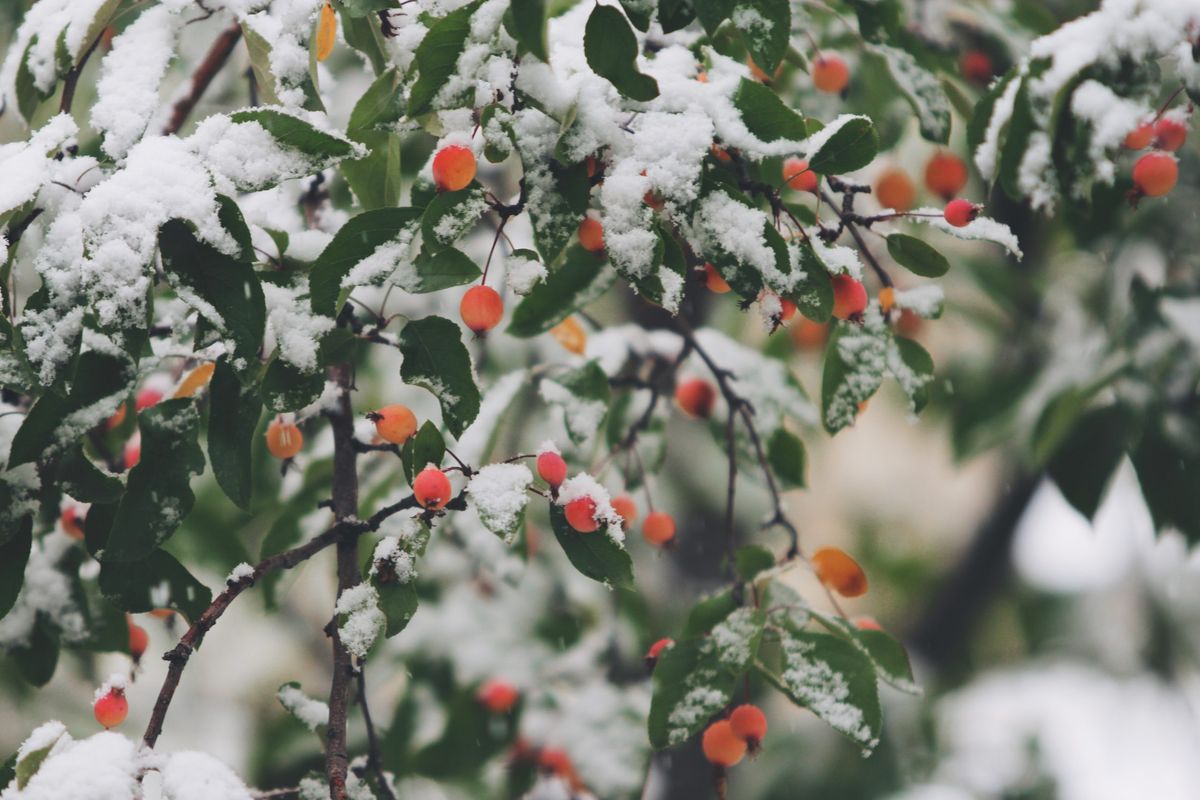10 winter-resistant plants that can withstand a snowstorm

Anyone who has experienced a long, chilly winter will attest to how wonderful it is to witness the emergence of anything green in the spring. It makes sense, then, that if a plant recovering from snow and cold is soothing to the spirit, a plant dying during the winter is more upsetting.
You should choose plants for your landscape that will thrive even in the harshest of cold snaps to prevent this springtime anguish. The good news is that no matter where you reside, there are many lovely, hardy plants to select from. There are too many to mention all the plants that can survive a winter outside, so we’ll just touch on them while offering some general planting advice for a winter garden.
If you’re seeking for additional yard and gardening advice, discover the proper way to plant a tree, why switching to an electric mower will save you money, and the truth behind hydrangea colour.
What kind of winter can you expect there?
Knowing how harsh winters are anticipated to be will help you choose which plants will survive where you live. The US Department of Agriculture created what are known as USDA hardiness zones, which are distinct regions based on average minimum temperatures, to assist individuals in determining that. In general, the lower the number, the colder it will probably get in that area. Additionally, plants are rated for hardiness zones to make your plant purchasing even simpler. Zones 8 to 11
A Fuji apple tree is classified for zones 5 to 10, while a peach tree is suitable for zones 4 through 8 (most of the continental United States, with the exception of some of the most northern and southern regions). View the detailed map to determine the USDA hardiness zone for your area.
You should pick plants based on more than just the USDA zones, though. Local nurseries and gardeners can provide first-hand information about what will thrive in your region and what will not. A local specialist may be more knowledgeable about the local microclimates and special gardening difficulties. Healthy plants depend on a variety of factors, including soil type, moisture levels, and sunlight in addition to temperature.
Plants that can withstand exceptionally cold winters
Rhododendrons
A species of flowering shrubs called rhododendrons are well-known for their vibrant pink spring blooms. They have waxy green leaves all year long, even after their blossoms have stopped blooming for the season. Rhododendrons can thrive as far south as zone 4, depending on the cultivar.
Tulips, crocuses, and daffodils
For some individuals, these three bulbs encapsulate what spring is all about. They are resilient up to zone 3, where they actually benefit from harsh winters. According to the Amsterdam Tulip Museum, a chemical reaction occurs when the soil temperature is below 55 degrees, which is why these plants require cold weather to blossom successfully in the spring.
Hostas
Hostas that prefer shade will wither away in the winter but reappear in the spring. All of the varieties are hardy up to zone 3.
Bleeding hearts
Bleeding hearts sound weak, and they also appear a touch frail with their rows of pink blossoms in the shape of hearts. These flowers, however, are hardy from zone 8 to zone 2, and they also wither away each winter. That implies that you can cultivate them even in the coldest regions of the US.
In the fall, bleeding hearts will die back and then reappear in the spring.
Irises
Iris varieties, of which there are many, are typically hardy in zones 3 through 9. (though some are only safe bets to zone 4). Whether or not you have a beard, there are varieties that might probably fit your winter.
Daylilies
Because they are hardy and require minimal maintenance, daylilies are frequently used in the landscaping of junctions and commercial buildings. That also holds true for making it through the winter. Daylilies are a wonderful option for many locations because they are often hardy from zones 4 to 9. Check first since the 35,000 various daylily cultivars will all have different climatic requirements.
Lilacs
Another plant that enjoys a colder winter is the lilac. These bushes have one of the strongest perfume punches of any garden plant and are hardy in zones 3 to 7.
Hydrangea
Depending on the variety, hydrangeas can survive in zones 3 and lower. The perennial plant with lengthy blooms can change its chemical composition. Based on the chemistry of the soil it is planted in, its blossoms change colour.
Daylilies are hardy flowers.
Sedum
Sedum is the outside solution to your packed windowsills for succulent lovers. Succulent-like fleshy leaves and, depending on the species, delicate blossoms, are characteristics of sedum. To zone 3, some sedum are resilient.
Blueberries
Every year, blueberry plants will produce a tasty summer crop of berries and lovely fall hues. Zone 3 is suitable for some types, but make sure to check. Purchasing from a nearby nursery will assist guarantee you acquire plants that are appropriate for your region.
To survive the cold, use native plants.
Why not turn to plants tailored to your particular area if you’re looking for plants that can survive winter there? Native plants have thrived in their historical range for thousands of years. This indicates that local animals have endured all of those winters, even historically harsh ones.
Native plants, such as columbine, have lovely blossoms and a history of withstanding the local winters.
Local conservation organisations are a wonderful place to start if you want to find native plants because they may be a little tougher to find than their occasionally flashier decorative relatives. With simply your zip code, the National Audubon Society can assist you in finding native plants. Unsurprisingly, these choices tend to favour those that benefit birds.
You can locate plants that benefit butterflies with the help of the National Wildlife Federation.
Native plants can be highly attractive in addition to being useful for animals, including pollinators, as is frequently claimed for them. Native plants can provide you what you want while enduring winter after winter, even if all you want is a nice-looking set of flowerbeds.
Check out our selections for the best indoor smart gardens and information on growing veggies in containers for more gardening advice.



